Mr Jacob, a 45 year old engineer presents with chronic heartburn. His endoscopy showed
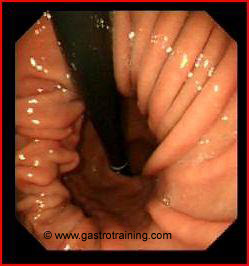
What is the diagnosis?
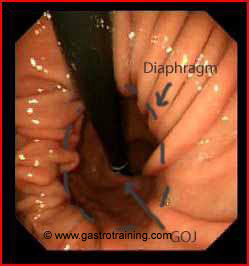
Sliding hiatus hernia. A normal J manoeuvre looks like
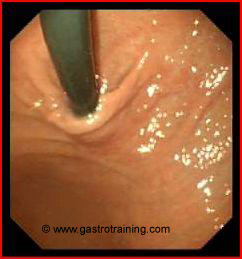
What is a hiatus hernia?
A hiatus hernia occurs when a portion of the stomach prolapses through the diaphragmatic oesophageal hiatus.
What are the types of hiatus hernia?
3 types Sliding hiatus hernia- most common type of hiatus hernia. It occurs when the gastroesophageal junction, along with a portion of the stomach, migrates into the mediastinum through the oesophageal hiatus
Paraoesophageal or rolling hernia- the widened diaphragmatic hiatus permits the fundus of the stomach to protrude into the chest, anterior and lateral to the body of the oesophagus; however, the gastroesophageal junction remains below the diaphragm.
Mixed hernia- combination of sliding and rolling hernia
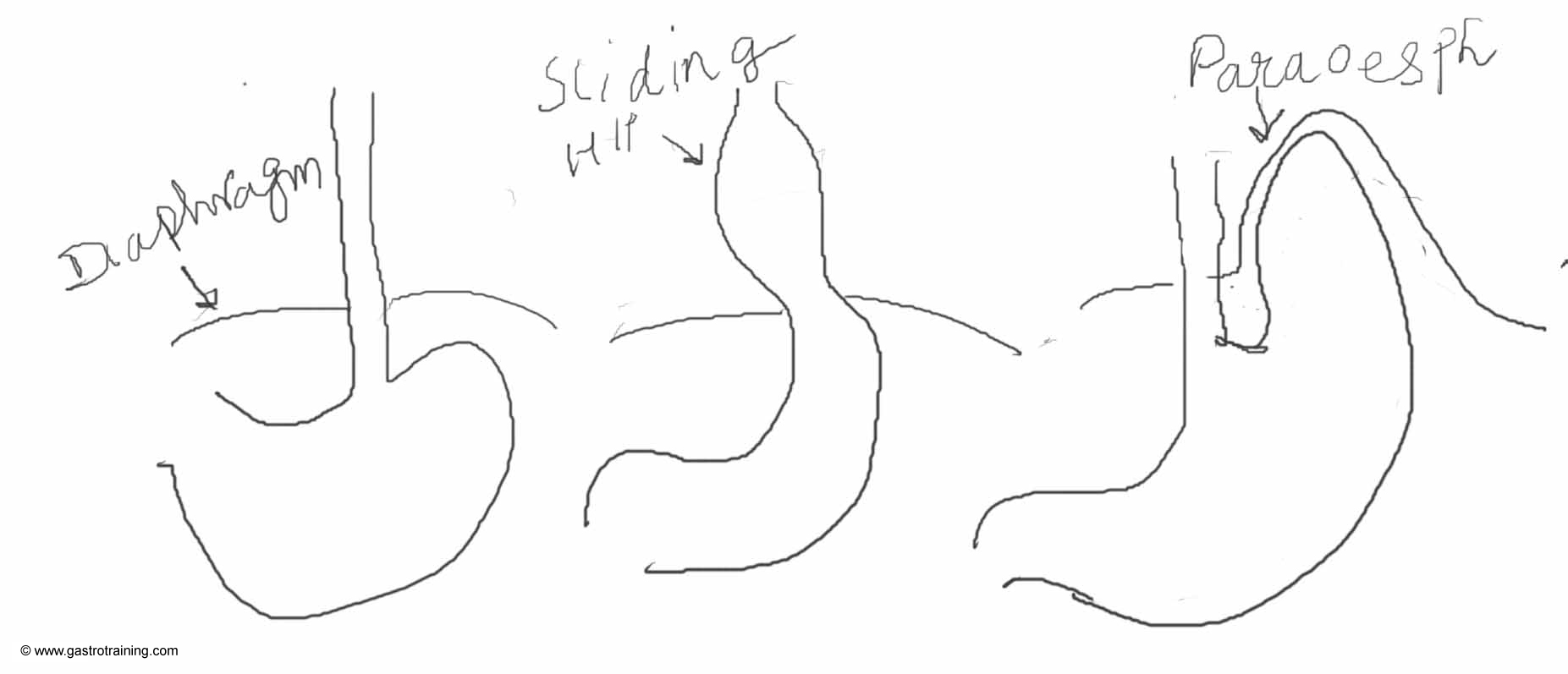
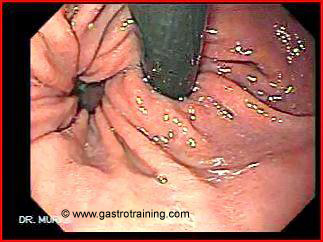
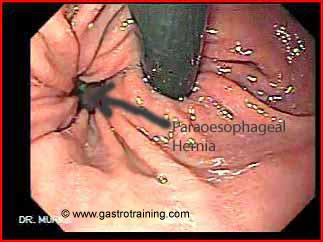
Discuss the epidemiology of hiatus hernia?
Hiatus hernias prevalence increases with age, from 10% in patients younger than 40 years to 70% in patients older than 70 years. Hiatus hernias are more common in women than in men.
What are the clinical manifestations of hiatus hernia?
Most hiatus hernias are asymptomatic and are discovered incidentally.
Sliding hiatus hernia predisposes to reflux or worsen existing reflux in a minority of individuals.
Rarely, a hiatus hernia may cause intermittent bleeding from associated oesophagitis, erosions (Cameron ulcers), or a discrete oesophageal ulcer, leading to iron-deficiency anaemia.
Para oesophageal hernia may rarely present with a life-threatening complication, such as gastric volvulus or strangulation (presents with vomiting and pain)
Discuss the management of paraoesophageal hernia?
Paraoesophageal hernias generally tend to enlarge with time. The risk of these hernias becoming incarcerated, leading to strangulation or perforation, is approximately 5%. This complication is potentially lethal, and surgical intervention is necessary. Because of the high mortality associated with this condition, the majority of published reports suggest that all paraoesophageal hernias in good-risk surgical patients should be repaired to prevent the development of potentially life threatening complications. However, several prominent surgeons have favoured a more conservative approach recommending watchful waiting is a reasonable alternative for the initial management of patients with asymptomatic or minimally symptomatic paraoesophageal hernias.
A recent paper concluded that If ELHR (elective laparoscopic hernia repair) is routinely recommended, it would be more beneficial than watchful waiting (WW) in less than one of five patients. WW is a reasonable alternative for the initial management of patients with asymptomatic or minimally symptomatic paraoesophageal hernias, and even if an emergency operation is required, the burden of the procedure is not as severe as was thought in the past. The paper also showed that studies overestimate the mortality of emergency surgery (17% vs. 5.4%). The mortality rate of ELHR was 1.4%. The annual probability of developing acute symptoms requiring emergency surgery with the WW strategy was 1.1%. For patients 65 years of age, ELHR resulted in reduction of 0.13 QALYs (10.78 vs. 10.65) compared with WW.
Ref- Stylopoulos N et al. Paraoesophageal Hernias: Operation or Observation? Ann Surg 2002;236(4):492-500.
Discuss the management of sliding hiatus hernia? Most sliding hiatus hernias are symptomatic and need no treatment.
Images courtesy of www.gastrointestinalatlas.com






